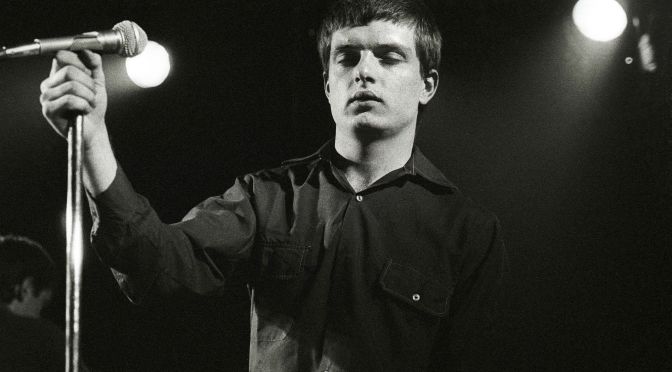Having spent some time looking at what a cover version is, and the different types of cover that exist, it’s time to take a look at some examples and, eventually, produce a personal top 10 of favourite covers.
First, though, let’s have a look at 3 different takes of a classic post-punk/new wave/industrial single – Joy Division’s iconic Love Will Tear Us Apart. I’ve selected 3 different versions. The first is by the original artist, Joy Division (1980 FAC23), the second a cover by Paul Young (1984) and the third a cover by Nina Persson (live performance 2015).
Starts with a throbbing bass overlaid with semi-acoustic guitar playing chords on its own, front of the mix. The sound is quite sparse and the texture increases as the drums enter, with a synth playing the main theme.
The overall sound is sparse and “industrial” – there are virtually no overdubs or layering of instruments or voices and there are no backing vocals (which are relatively backgrounded in the mix). The power of the song comes from this simplicity and sparseness, coupled with the lyrics. Most of the sound is centrally-located with little or no stereo effects.
This cover was released towards the end of the “New Romantic” pop genre and the opening bars immediately indicate a completely different take on the song. The drums and bass are high in the mix, the bass drum particularly so, with a different rhythm to the original. There is no slow build-up – the song opens loud and bombastic. The entrance of the vocals (with echo and a variation of the melodic line) is accompanied by background synth effects and a diminuation of the accompaniment. The vocals in the “chorus” are augmented by overdubs. A piano plays the melody in the background during the first break following the chours. In the next verse a backing “ahh” chorus can be heard, followed by a dreadful spoken version of the lyric. A “lead” guitar solo is introduced before the next verse. The lyric “Do you cry out in your sleep” is accompanied by a cacophony of non-musical noises, presumably designed to show distress since the vocalist is not apparently able to supply this themselves. At this point I stopped listening as I’d forgotten how dreadful this version was. If one did not know any better, one would be hard-pressed to identify it as the same song; thus on the “cover spectrum” this is in the far end, re-interpretation region.
Persson starts with a pianist playing Chopin’s raindrop prelude; following this the first verse is sung with solo voice, accompanied by piano. At this point one could be forgiven for thinking this is yet another take on the song – acoustic, unplugged version (although Persson’s voice does have some emotional power). However, the band then join in and produce a sound not dissimilar to the original – similar instrumentation and structure to the song and the emotional content is provided from the vocalist without the need for effects. Overall I like this version very much as I think it brings something different to the song while retaining the power of the original.
